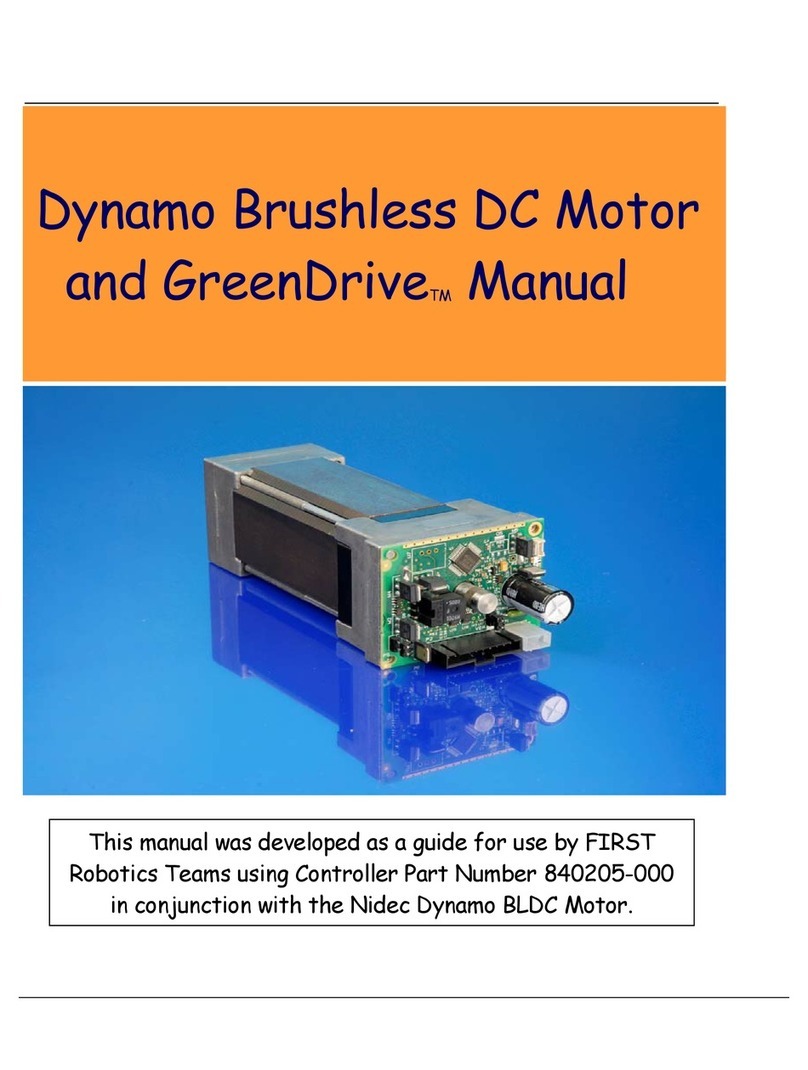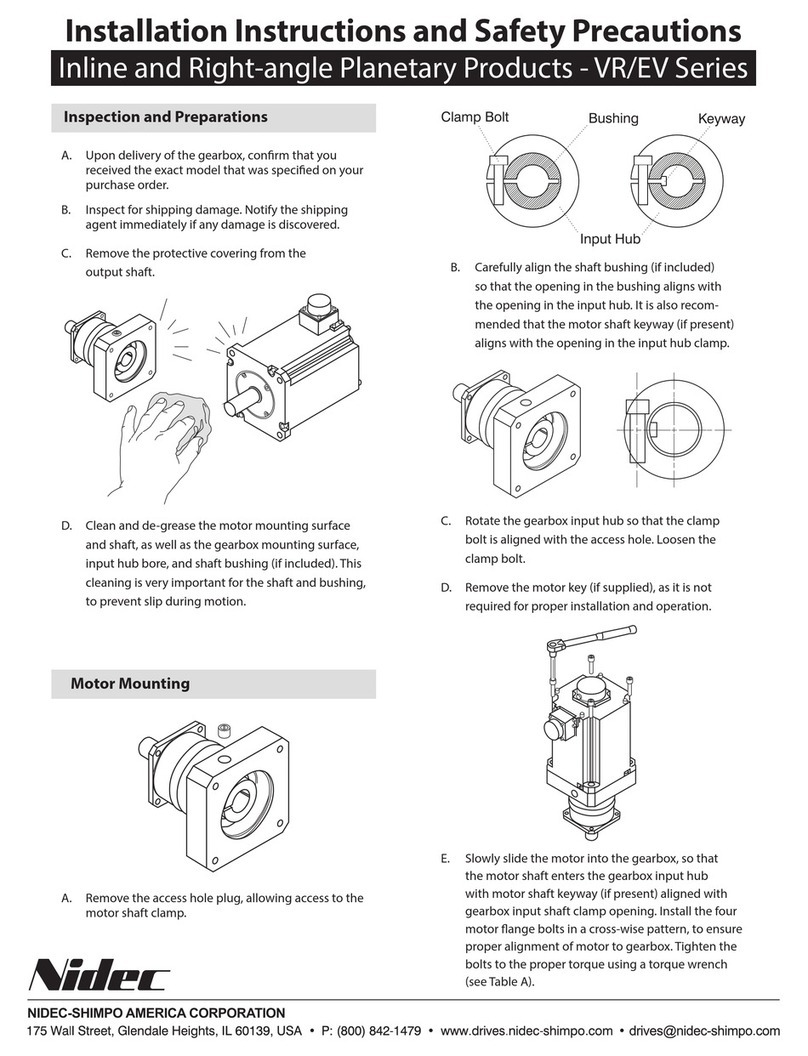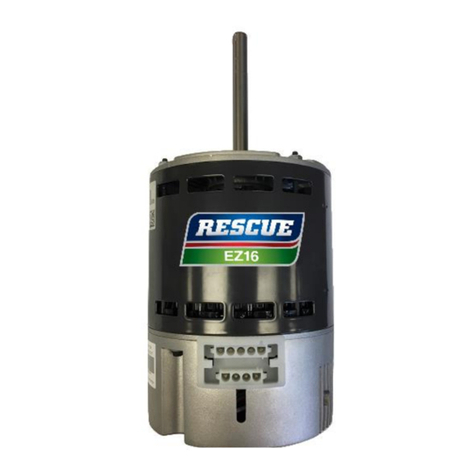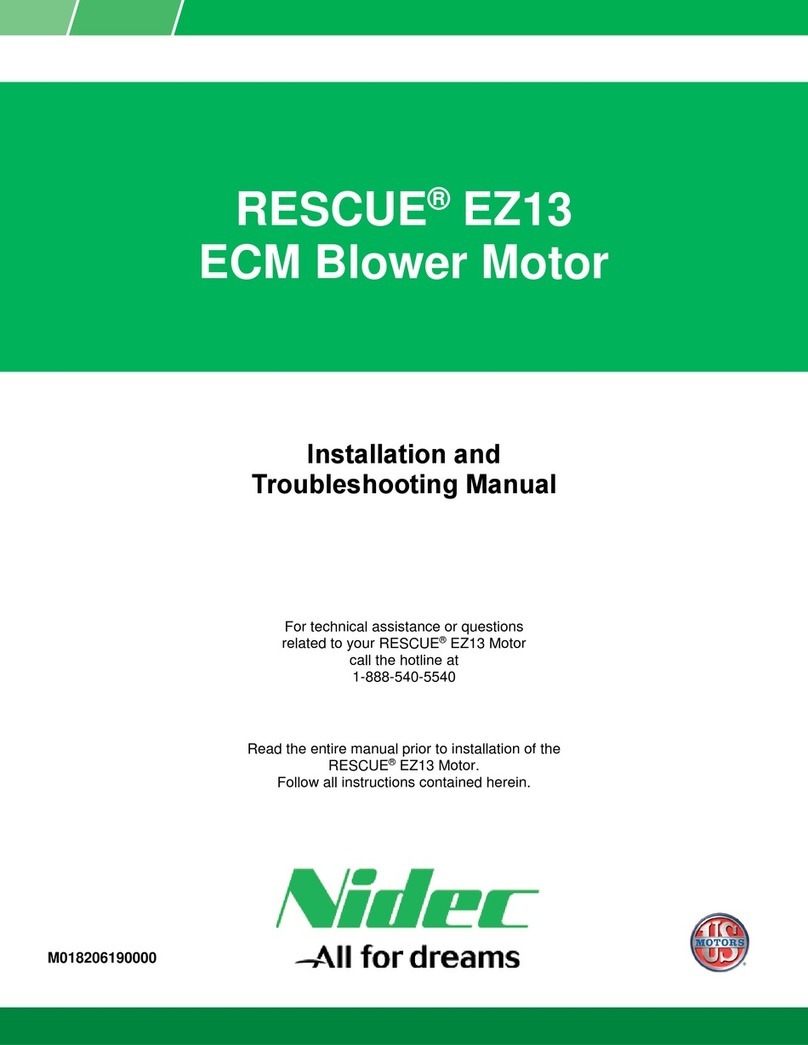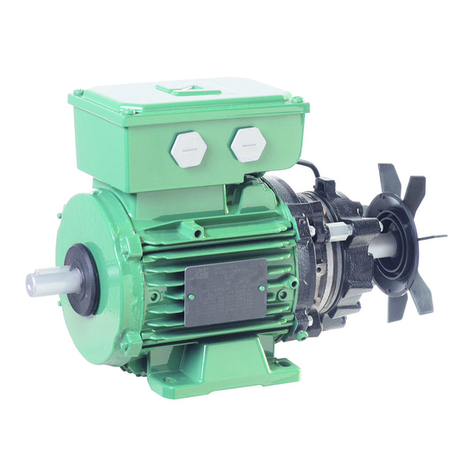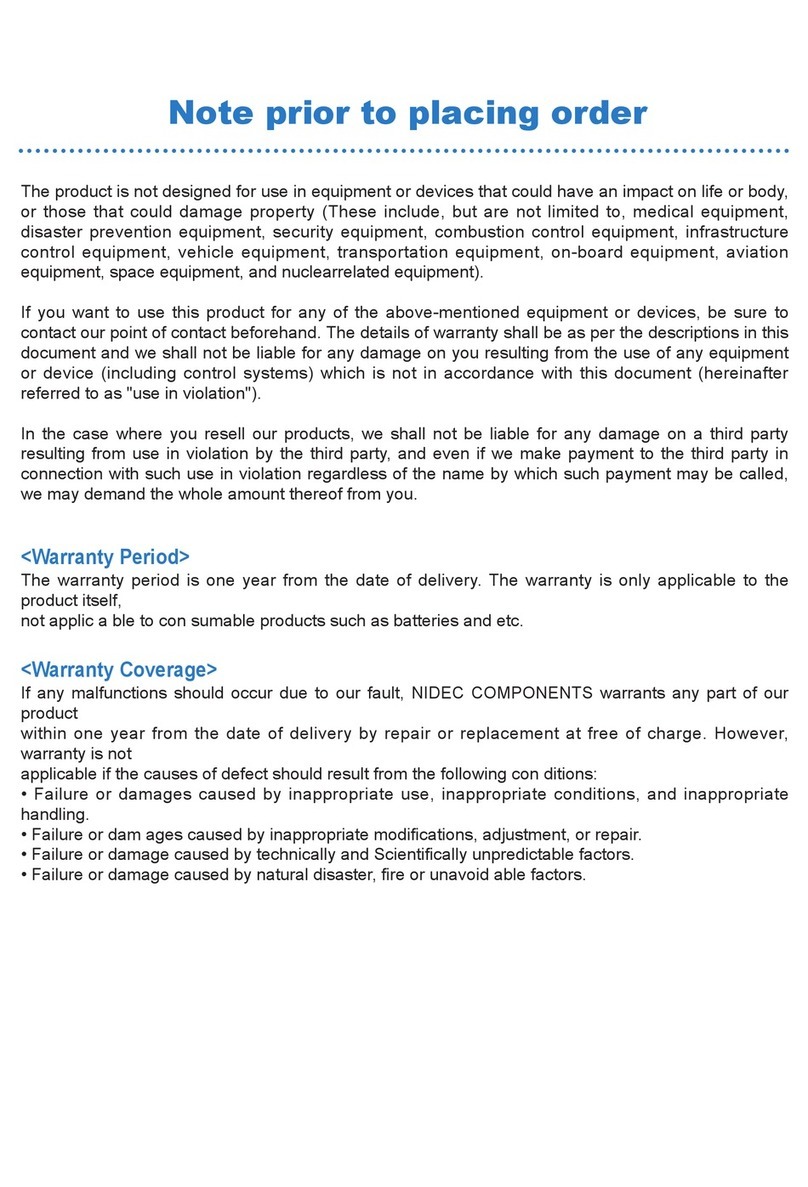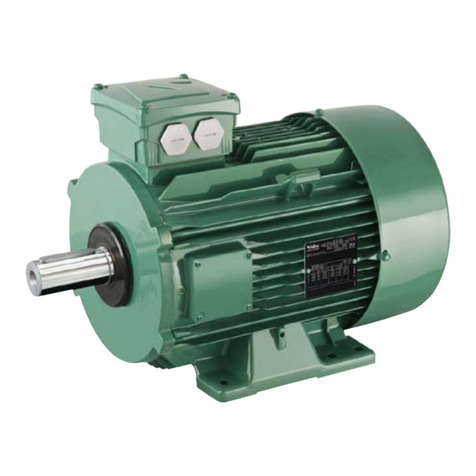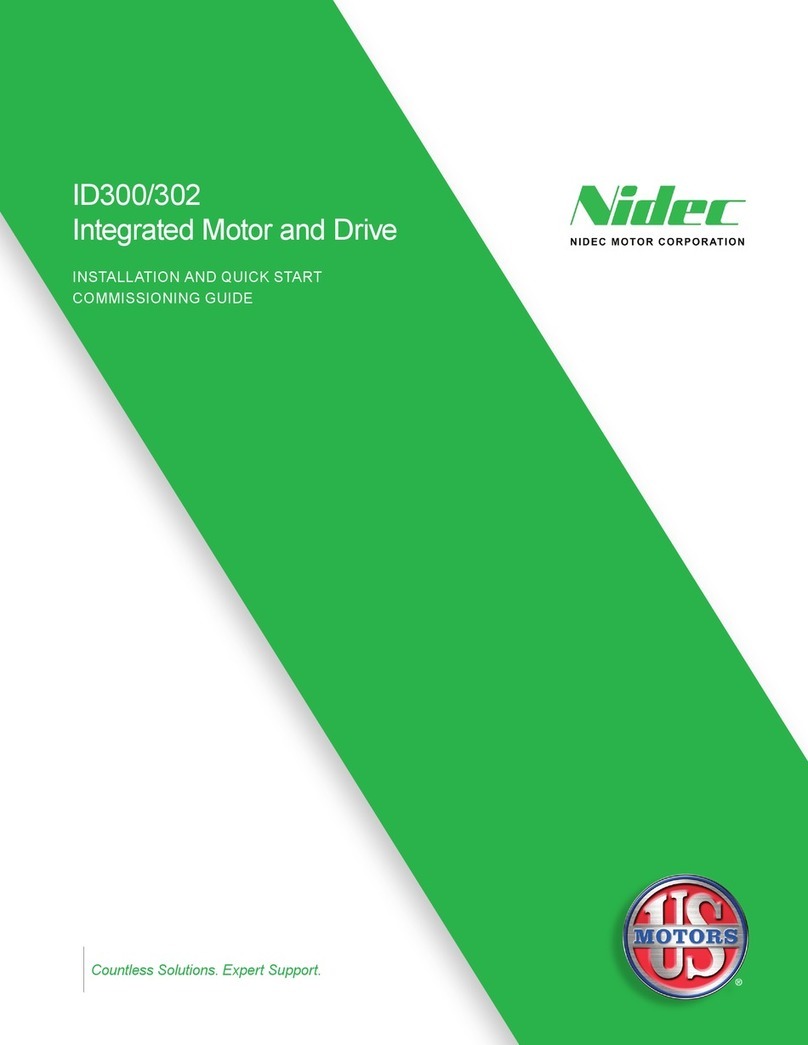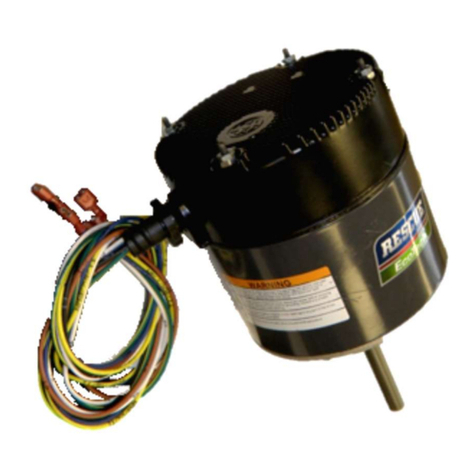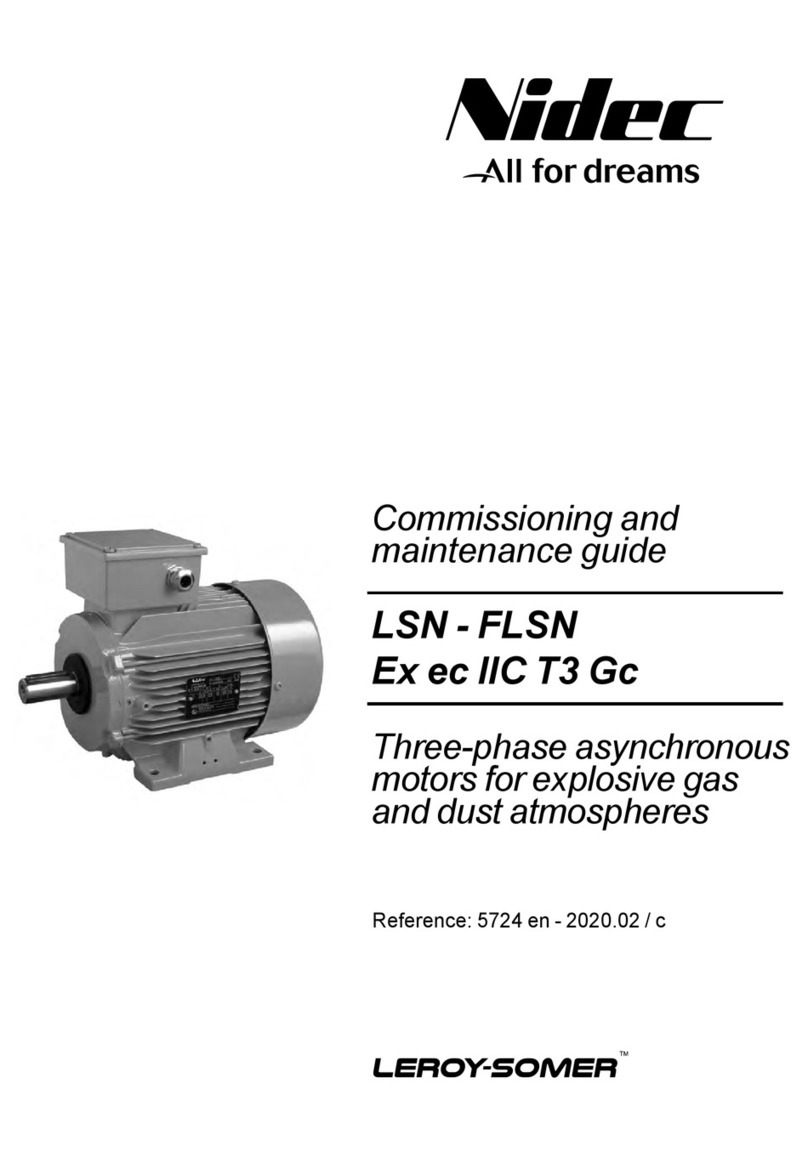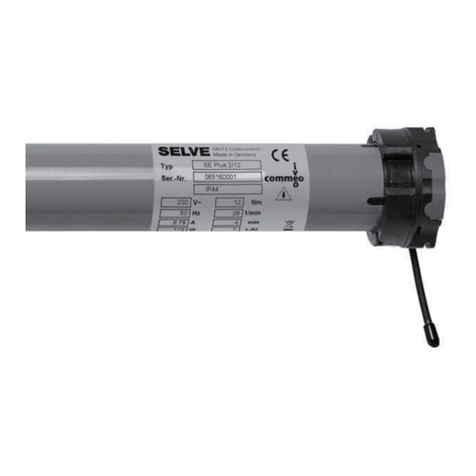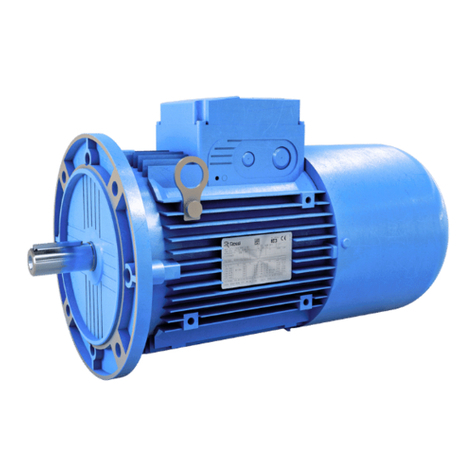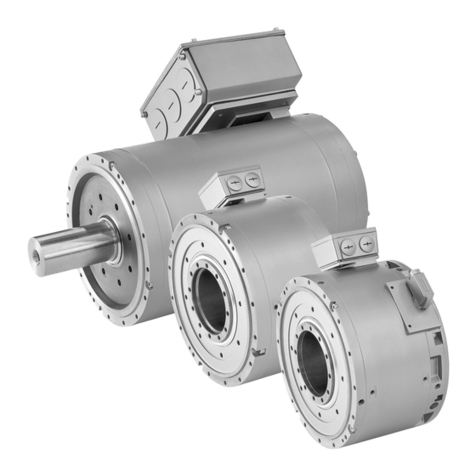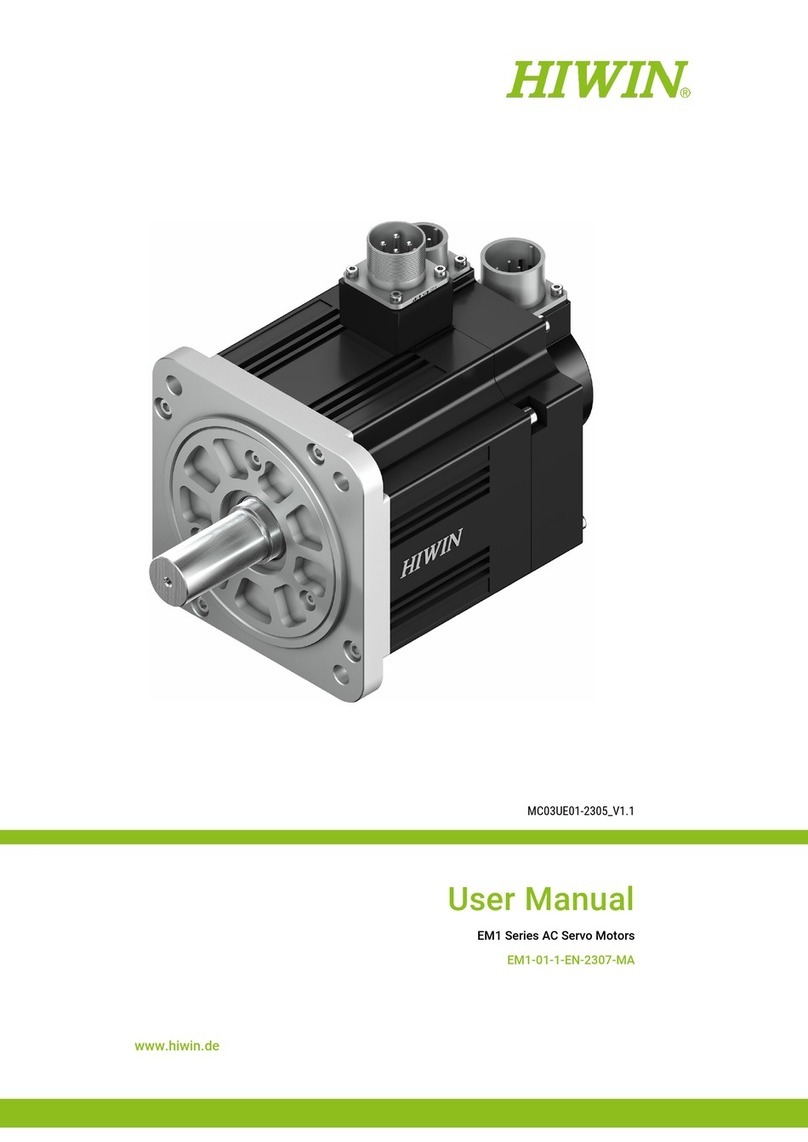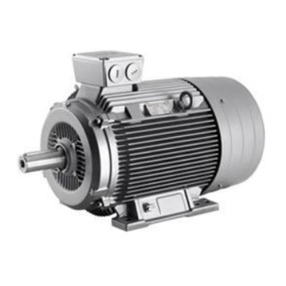
8
CORRECTIVE MAINTENANCE
FFB Brake Motors Maintenance Guide
5287 en - 2019.07 / d
4 - CORRECTIVE MAINTENANCE
Before any operation on the brake, always
disconnect the brake motor from its power
supply (Putting in writing).
4.1 - Tooling (not supplied)
Tightening for assembly of brake parts
Open end, handle, box
wrench (M8/10/16, etc.)
Removal of the face plate, extension,
yoke, DLRA, DLM, DMD
Special socket
Screw and unscrew the shaft end
extensions
Bearing change: refer to manual §3.2
Mallet (leather or plastic) Lift the keys from the splined ring
Multimeter Voltage check
Ohmmeter (indicator lamp)
Coil resistance measurement, micro-
contact adjustment
Large at blade screwdriver Fan removal
(FFB1), M6 (FFB2 and 3)
and M8 (FFB4 and 5)
Retting the armature on yoke
2 large at blade
screwdrivers
Fan removal
Always record the connections of the supply
wires and options before disconnection.
Similarly, record the position of anges with
respect to the stator and the fan's direction on the rotor.
4.2 - Removing the FFB brake motor
- Remove the brake motor using appropriate tools.
- Disconnect the brake motor from its supply.
- Open the terminal box, record the wires and their position
(supply of the brake motor, encoder, probes, etc.). Always
record the connections of the supply wires and options before
disconnection.
- Disconnect the supply wires from the motor and brake
supply terminal strips (+ and - terminals).
- Disconnect the rectier bridge and check the stator isolation
(> 10 MOhms).
- If the brake is tted with a DLRA, DLM or DMD system,
unscrew the lever rod(s) (item 1502, 1605).
- Unscrew the cover screws 27, remove the metal cover 13.
- Remove the fan 7 by removing the axial locking circlips 9.
- Extract the fan 7 using two screwdrivers as levers.
- Remove the VLS gasket 1402.
- Unscrew the xing screws from the yoke 1106.
- Remove the yoke 1105 from the brake, remove the O-ring
1107, extract the armature 1102 while recording its angular
position.
- Remove the brake disc 1101 while recording the assembly
direction (large hub shoulder on motor side).
- Unscrew the xing screws 1305 from the face plate, then
remove the face plate 1100.
- Unscrew the extension 1401 while blocking the drive shaft.
- Remove the circlips 1303.
- Extract the splined ring 1302 using a puller.
- Remove the keys 1301 from the ring.
- Find all the faulty parts to order spare parts. Refer to §3.
• Clean the parts:
- with a blow gun only for electrical parts and the lined disc
item 1101 (no solvents, no humid products);
- using a non greasy degreasing product for mechanical parts
- using a scraper for joints.
• Change the gaskets and bearings. Refer to §2 and 3.
4.3 - Retting the FFB brake motor
Clean the bleeding ports and plugs before
retting.
Verify that no pollution distorts item 1105.
Tightening screw according to NF E 25030-1 or VDI2230.
Reverse the removal procedure. Ret the extension 1401 and
tighten to the following torque:
Check eccentricity (≤ 0.05 mm) in the case of a version with
coder § 6.6
- Retting: the keys 1301, socket 1302, circlips 1303, face
plate 1100 (with locating pin: position the outer spigot
opposite the coil cable), brake disc 1101.
- Position the armature 1102 (non through drill hole on one
face located at 9 o'clock with respect to the yoke cable) on
the yoke 1105 tted with its springs (§5.2 Spring positions).
Screw the two threaded screws through the yoke into the
armature while ensuring it does not protrude the braking face
(slight recess). Press the armature onto the yoke using two
nuts mounted onto the rods (tighten each rod gradually).
- Install the O-ring 1107 inside its groove between the
armature 1102 and the yoke 1105.
- Mount the yoke and armature onto the face plate using the
xing screws 1106 (tighten to torque).
- Check that the brake disc turns freely.
- Ret the VLS 1402.
- Remove the two threaded rods: the brake disc is blocked.
- Ret the fan 7 and its holding washers 8and 9.
- Ret the cover 13.
- Ret the control rod of the DLRA, DLM lever(s) if necessary.
If Encoder option: see §6.6
If Forced Ventilation option (VF) + Encoder: refer to §6.7 and
6.6.
It is prohibited to drive the extension shaft
and the fan in manual rotation with the
parking brake applied, or the brake released
under load.
Include sufcient
distance around the
brake for access and
intervention.
